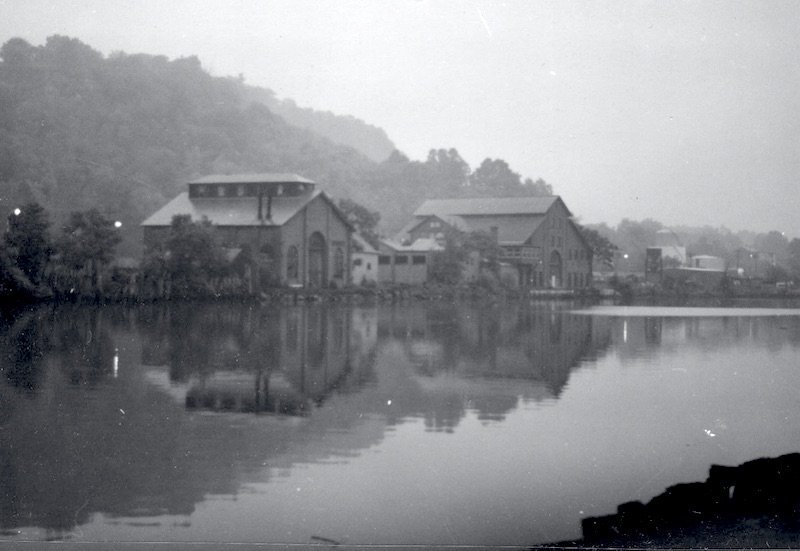Hudson River Maritime Museum
Thomas Cornell Steamboat Company Buildings
Now a restaurant, I once repaired tugboats.

-
-
-
- Ole Savannah restaurant, formerly a Cornell Steamboat Company boiler house.
- Born in 1814 at White Plains, Thomas Cornell was named after his uncle, Thomas W. Cornell who ran a general store serving workers of the D&H canal. Uncle Cornell’s business was profitable, and through his business profits he was able to purchase land next to locks on the D&H. This enabled him to enter the Cement business which the canal was known for. A few years later Uncle Cornell’s brother bought a dock and his nephew bought a sloop which entered them in the Rondout freight business. By the time Uncle Cornell left he was running a profitable cement mining and shipping business.
- When Cornell’s brother left the family business in cement, young Thomas Cornell took over his brother’s position, and the company began leasing canal boats to carry freight and passengers up and down the creek. Jacob B. Bidwell arrived at this time as well, leading the firms its first name as a steam freighting line “Cornell and Bidwell.” Through a combination of brokering transport on the river’s already established steam lines, as well as offering their own freight and passenger services their company was able to prosper.
- In the early 1850s Thomas Cornell was able to take control over the family businesses in river freighting and brokering for passenger steamers. Expanding the business through wise investments in freight shipping, Cornell was frequently able to avoid the failures that usually befell his competitors such as financial exhaustion and poor fleet upkeep. The Cornell Company usually bought up older ships and either put them to work or ruthlessly cannibalized them for parts and salvage for better boats in his fleet. One particularly noteworthy boat was the Mary Powell, bought twice by Cornell from owners unable to pay for the ship’s operation. Additionally, Cornell placed substantial investment in railroads, a hotel, and even had a hand in founding the Rondout Savings Bank and the Daily Freeman. He was a Congressman twice, serving between 1867-69 and 1881-83. Though he was somewhat notorious for being frequently absent from sessions of Congress.
- Thomas Cornell died of pneumonia in 1890, leaving his business to his son-in-law S.D. Coykendall. Coykendall was also a talented manager and continued Cornell’s practice of purchasing old or used ships built by competitors and using them for service or utilities. A major reason for the company’s continued success was its ability to outlast its competitors in freight and shipping. Cornell’s company proved adaptable and its varied outlying business in rail and canal transport helped to give the company great economic stamina even during hard times.
- After the Second World War the Cornell Steamboat Company began to decline. The company’s outer layer of railroad and barge services on the D&H became money sinks rather than generators. The continuously rising maintenance costs of ships with ever decreasing revenue, as well as the Coykendall family’s interests being directed elsewhere led to a gradual breakup of the company. The New York Trap Rock Corporation became sole owners of the Cornell Company in 1958 and later proceeded to shut down and sell the company’s fleet of tugboats and barges. Rockland County being the last Cornell built tugboat to operate was sold and eventually sunk in 1986 as an artificial reef.
- Learn more about the Hudson River Maritime Museum: http://www.hrmm.org/
-
-